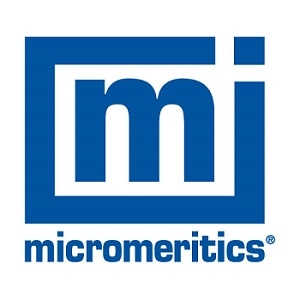Data selection for fitting BET surface area is normally easy using the MicroActive software. A wide range of isotherm data is selected and then the BET fit may be refined further for yielding the specific surface area of a material.
BET Surface Area Rules
The process for optimization and data selection has been automated completely using the BET surface area rules advocated by Professor Jean Rouquerol, CNRS Marseille, FR.
Prof. Rouquerol suggests these criteria:
- A linear fit to the BET transformed data must be obtained - this is very common for determining specific surface area.
- The BET "C" constant must be positive (C > 0). For determining the surface area this is common practice.
- The Rouquerol transform ηads (1-p/p°) must increase wth p/po for the data selected to calculate the BET parameters.
- The monolayer capacity - ηm should be within the limits of data that were used to fit the BET parameters.
- The value of 1/(√C + 1) ≈ p/p° at the monolayer capacity.
Prof. Rouquerol contributed rules 3, 4 and 5 and these rules enable automatic selection of points to determine the BET surface area. With rule 3, ηads (1-p/p°) is monotonically increasing with p/p°. This offers a clear basis for measuring the maximum values of p/p° and ηads as the Rouquerol Transform has a peak maximum corresponding to the maximum values to be used in the BET transform.
The fourth rule is used to confirm that the calculated value of the monolayer capacity ηm falls within the range of data used to calculate the BET parameters. By this it is confirmed that the monolayer capacity is not extrapolated.
Rule five 1/(√C + 1) ≈ p/p° offers a consistency check and may be used for optimizing the point selection for calculating the BET fit. The value of 1/(√C + 1) should approach the relative pressure calculated from the BET transform at the monolayer capacity.
The automated report can be used with MicroActive stand alone software starting from version 2.0 and MicroActive included with: TriStar II Plus, ASAP 2020 Plus, ASAP 2060, ASAP 2425, ASAP 2460, and 3Flex.
A broad range of materials were used for the automatic selection of points. This is an example of the automated optimization and selection for a Fluid Cracking Catalyst (FCC). It is often difficult to select the proper range for the BET calculation since it is a combination of zeolite (faujasite) and clay binder and the microporous component (zeolite) may often cause the BET "C" value to be negative. The optimized range is validated by this new report against the previously given rules and gives both the summary data and the results of the rule checking.
.png)
Figure 1. Automatic selection of data used for calculating the BET surface area of a fluid cracking catalyst.
It may be equally challenging the determine the BET surface area of metal organic frameworks (MOFs). Figure 2 is an example of the automatically optimized BET fit for Basolite C300.
.png)
Figure 2. BET surface area for Basolite C300 with data automatic selected using the five rules propsed by Prof. Jean Rouquerol.
The automatic selection is also effective for non-microporous materials such as silica and titania as seen in Figures 3 and 4.
.png)
Figure 3. BET surface area for meso-porous silica.
.png)
Figure 4. Automatically selected surface area points for titania.
These five rules are equally applicable to microporous carbons and that is shown in Figure 5.
.png)
Figure 5. Automatic selection and optimization of data used for calculating BET surface area of an activated carbon using the Rouquerol criteria.

This information has been sourced, reviewed and adapted from materials provided by Micromeritics Instrument Corporation.
For more information on this source, please visit Micromeritics Instrument Corporation.